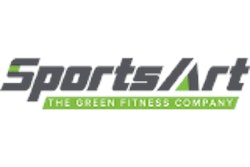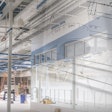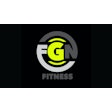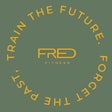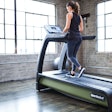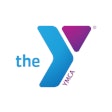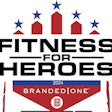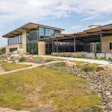
There’s no denying the growing popularity of strength training. Gymgoers today are increasingly prioritizing strength training, and manufacturers are responding to the trend by providing facility owners with a variety of innovative products. Athletic Business reached out to a number of the top strength equipment suppliers in the industry to ask how they are responding to the rising demand for strength training options — and you might be surprised by what they had to say.
 Matrix
Matrix
Matrix Fitness
Chris Adsit, Senior Global Product Manager, Strength
What has been the biggest shift/innovation you’ve observed in strength equipment in recent years and how has your company responded to it?
The biggest shift in strength equipment in recent years has been a return to traditional strength training and familiar compound movements, combined with aggressive, isolated exercises. This trend reflects a growing recognition of the undeniable benefits of intense weight training, as proven by both science and longstanding bodybuilding practices. Users now seek to maximize their time and achieve tangible results, marking a shift toward what can be termed the “results age.” In response, Matrix and our affiliate brand Xult have innovated by expanding our rack and rig packages to be fully customizable, fitting any space or training ideology. Our Magnum MX Racks and Xult Rigs are configurable, expandable and offer excellent custom-branding opportunities. This allows us to provide equipment that complements our customers’ specific training and business strategies, transforming us from mere equipment suppliers to fully integrated partners in their success.
What are your commercial customers looking for in strength training equipment?
Commercial customers’ needs in strength training equipment vary by modality. For selectorized equipment, they seek ease of use, an efficient footprint to maximize floor space and comfortable ergonomics to accommodate a wide range of users. For free weights, they prioritize durability, aesthetic appeal and optimal body positioning for serious strength training. Plate-loaded equipment is valued for its dual role: it helps users transition gradually from machine exercises to free weight training, and for experienced lifters, it provides a controlled movement path for heavy lifting. Across all types, durability is a baseline expectation.
Has the popularity of functional fitness impacted what your customers are looking for in terms of strength training equipment?
Yes. With higher-intensity strength training on the rise, full-body and compound exercises using functional accessories, such as bands, balls and free weights, are increasingly favored. In response, we’ve integrated storage solutions into our racks and rigs, allowing more equipment to be available in areas where these exercises are performed. This approach maximizes floor space and workout efficiency by keeping users in one area for group training or circuit-style exercise, while also utilizing traditionally underutilized spaces for accessory storage.
What types of innovations in strength training modalities and equipment do you foresee in the next 5 to 10 years?
In the next 5 to 10 years, we foresee innovations in strength training modalities and equipment that balance aggressive historical training styles with progressive options for all fitness levels. Catering exclusively to advanced athletes would limit our reach, so our goal is to offer a broad range of options to support users on their fitness journeys, regardless of where industry trends take them. Technology and data tracking will become increasingly important, but these tools must be seamless and affordable to integrate easily into users’ daily routines. At Matrix, we are committed to continuously innovating to attract users to our equipment and deliver the ultimate training experience. This includes enhancing approachability, functionality and the feel of our equipment, as well as introducing unique movements. Our aim is to make every user feel like a champion in the gym.
 Torque Fitness
Torque Fitness
Torque Fitness
Pete Lundstrom, Vice President Of Sales, North America
What has been the biggest shift/innovation you’ve observed in strength equipment in recent years and how has your company responded to it?
Strength has been, and always will be, a staple in the fitness industry. We will continue to see the need for culminated options between strength and functional as the population strives to become stronger, more mobile and add longevity to their bodies.
What are your commercial customers looking for in strength training equipment?
As gymgoers evolve — craving more efficient, varied, high-intensity workouts — the pressure mounts on gym owners to keep pace. Every inch of a gym’s floorspace counts. That’s why Torque Fitness’ customizable solutions are such an invaluable asset, able to deliver maximum capabilities per square foot. Our innovative, modular and customizable options provide lifting stations, accessory storage, a variety of mounting options, attachments and more. This not only expands a gym’s functional area for classes and stretching but infuses the environment with a dynamic sense of possibility.
Has the popularity of functional fitness impacted what your customers are looking for in terms of strength training equipment?
Torque Fitness drives demand for its strength products through a multifaceted approach that leverages product innovation, quality and durability, customization options, and a focus on customer satisfaction. We invest in research and development to create cutting-edge strength training equipment that ensures we stand out in a competitive market. By emphasizing the high quality and durability of our products, Torque Fitness builds a reputation for reliability and longevity. This appeals to serious fitness enthusiasts and commercial gym owners who prioritize long-term investment in our equipment.
What types of innovations in strength training modalities and equipment do you foresee in the next 5 to 10 years?
As we watch demand and priority continue to grow in the strength category, we predict this trend will continue upward.
 Precor
Precor
Precor
Erica Tillinghast, Program And Product Designer
What has been the biggest shift/innovation you’ve observed in strength equipment in recent years and how has your company responded to it?
In recent years, glute training has surged in popularity, driven largely by increased female interest in strength training. Dedicated products for hip thrusts, kickbacks, hip abduction and more are captivating fitness consumers. Targeted approaches and methodologies for shaping and strengthening the glutes top the list of new product innovation in 2024. In response, we launched the Glute Bridge Bench and partnered with Glutebuilder to introduce a groundbreaking plate-loaded line that optimally challenges the glutes, hips and core.
What are your commercial customers looking for in strength training equipment?
Commercial customers are looking for strength equipment that stands for quality and innovation, and that meets the needs of the exercisers. Our recent portfolio growth matches the requests we’re hearing from customers — that multi-stations are a critical hub for younger strength training audiences, that glute training is top of mind and that back-to-basics lifting continues to grow.
Has the popularity of functional fitness impacted what your customers are looking for in terms of strength training equipment?
Facilities are expanding their strength footprints, making room for more functional training equipment and open space for bodyweight and accessory-based exercises. To meet these needs, we recently introduced the Precor Functional Training line, a suite of products designed specifically for operators looking to create a hub for functional movement that integrates with popular equipment and preserves open floor space.
What types of innovations in strength training modalities and equipment do you foresee in the next 5 to 10 years?
Strength training will continue to grow, but it will keep evolving. Some areas where we can anticipate growth are in the connection between nutrition and strength programs, tracking with fitness apps, more AI-driven workout providers and a deeper connection with longevity. At Precor, we will accelerate the delivery of new and evolving strength products to meet exercisers’ needs.
 Beaverfit
Beaverfit
Beaverfit
Nick Vay, Vice President Of Commercial Sales
What has been the biggest shift/innovation you’ve observed in strength equipment in recent years and how has your company responded to it?
On our end, it’s the increased demand for strength training and the desire to provide outdoor strength training environments. To meet the growing appetite for strength training, our partners are looking for innovative ways to create or expand training environments, and going outdoors is often the best option.
What are your commercial customers looking for in strength training equipment?
Our customers prioritize three things: quality, customization and integrated storage. They want a durable product that represents their unique brand and offers the best user experience for their members. Our customers don’t want to compromise — and thankfully, with BeaverFit, they don’t have to.
Has the popularity of functional fitness impacted what your customers are looking for in terms of strength training equipment?
Absolutely. More of our customers are looking for a combination of form and function with solutions that not only fit the needs of traditional strength training, but also accommodate a slew of functional fitness movements with various attachments and anchor points, all while looking good and having a scalable footprint for small to large spaces.
What types of innovations in strength training modalities and equipment do you foresee in the next 5 to 10 years?
We expect to see equipment solutions that are not just “one thing” but can be used for multiple types of strength, functional and other modes of training. The ability to add on and have equipment adapt and grow with trends will be a key piece of how modular strength equipment benefits both facilities and end users.
 Marpo Fitness
Marpo Fitness
Marpo Fitness
Ryan Fuchs, USA Sales Manager
What has been the biggest shift/innovation you’ve observed in strength equipment in recent years and how has your company responded to it?
The fitness industry for generations has been dominated by two very controlling forces when it comes to “strength development.” The first — plates and weights. The second — selectorized cables and machines. This creates a constant battle with liability in space, movement and safety if the user is not prepared. Marpo Fitness provides the fitness industry with an alternative solution that focuses on safety, versatility and durability in a very small space. Marpo Fitness puts the “fun” in functional.
What are your commercial customers looking for in strength training equipment?
The Marpo Fitness consumer is about focusing on safety, versatility, durability and fun.
Has the popularity of functional fitness impacted what your customers are looking for in terms of strength training equipment?
Functional fitness equipment manufactured by Marpo Fitness blends the best of all worlds when it comes to “strength development.”
What types of innovations in strength training modalities and equipment do you foresee in the next 5 to 10 years?
The focus for Marpo Fitness will be to continue to develop more advanced ways to promote highly functional strength and cardio pieces that are easy to use for everyone, and for those of all fitness levels. The goal will always be to make fitness safe, fun and simple for everyone, while exploring dynamic and functional freedom in movements and exercise that promote both physical and mental wellness.
 PLAE
PLAE
PLAE
Christy Browning, Senior Director Of Brand Marketing
What has been the biggest shift/innovation you’ve observed in strength equipment in recent years and how has your company responded to it?
The biggest shift is a return to basic, foundational movements and equipment, such as strength racks and plate-loaded systems that can be enhanced with accessories. Simplicity is key, yet there’s also a significant integration of technology. Screens, metrics and outputs are becoming crucial as technology finds its place in strength training, offering new opportunities for innovation and enhanced training experiences.
What are your commercial customers looking for in strength training equipment?
Branding is paramount for our commercial customers. They want strength equipment that is efficient, easy to use and approachable for both athletes and fitness enthusiasts, but also a branding powerhouse. Unique, standout designs that highlight brand identity are essential. We maintain a consistent performance mindset regardless of the size of the space and obsess over every detail, just like our customers, ensuring top-notch aesthetics without sacrificing quality or performance.
Has the popularity of functional fitness impacted what your customers are looking for in terms of strength training equipment?
Functional fitness has paved the way for a resurgence in strength training, making it a central focus in training and programming. It has also broadened the demographic appeal, particularly among women. Strength training is now seen as essential for achieving human performance goals. We provide the cutting-edge tools necessary to meet the diverse objectives of different facilities.
What types of innovations in strength training modalities and equipment do you foresee in the next 5 to 10 years?
In the next 5 to 10 years, we foresee a trend toward simplified, natural-feeling equipment. Our upcoming collaboration with Tyler Hobson reflects this direction. Additionally, plate-loaded training is re-emerging as a key modality. With strength coaches having limited time with athletes, foundational movements are increasingly vital to achieve quick and effective results, enhancing performance on the field.
 Iron Grip Barbell Company
Iron Grip Barbell Company
Iron Grip Barbell Company
Michael Rojas, President, Co-CEO
What has been the biggest shift/innovation you’ve observed in strength equipment in recent years and how has your company responded to it?
Demand for customized equipment has increased substantially in recent years, so we’ve expanded the engraving capacity in our Texas factory to meet it. This interest in greater brand recognition has been fueled in part by members frequently posting their free weight workouts on social media, and facilities want to be able to benefit from the exposure. We’ve also noted an increasing interest in heavier free weights, and we’ve developed an ultra-heavy range of dumbbells to meet this demand.
What are your commercial customers looking for in strength training equipment?
Commercial customers recognize that free weights are the most used category of equipment in a facility. Accordingly, they are expressing increased interest in premium, heavy-duty equipment that will look better longer and last longer. Durability and longevity represent value, which is critical for commercial customers, leading to more of them seeking out the long-lasting durability of a premium product.
Has the popularity of functional fitness impacted what your customers are looking for in terms of strength training equipment?
Free weight usage, especially dumbbell usage, has expanded tremendously. With increased demand, existing facilities are expanding their current free weight spaces while new facilities are being designed with larger spaces to accommodate more dumbbell racks and utility benches. Customer interest in functional training also demands feature-rich free weights that offer increased versatility and functionality.
What types of innovations in strength training modalities and equipment do you foresee in the next 5 to 10 years?
It’s now widely accepted that strength training is among the most effective ways to get and stay fit and healthy, so it’s no surprise that a variety of strength training modalities continue to proliferate and gain momentum. However, I think demand for general strength training with free weights will continue to dominate, and will likely outpace interest in other kinds of exercise. It’s the category of strength equipment that offers the most variety, functionality and utility. Further, it’s accessible to people at all fitness and experience levels. And facilities that emphasize free weights have lower build costs overall, which will keep this category growing. The basic tools for free weight training are already very effective and are best realized when their functionality is straightforward. That said, innovations over the next few years may include dumbbells that provide feedback, tracking, usage data, in-facility movement, etc. But the primary purpose of free weights will remain the same, so improvements in build quality, longevity, speed-to-market production and other value-added innovations will be important.
 Core Health & Fitness
Core Health & Fitness
Core Health & Fitness
Jeff Dilts, Vice President Of Global Marketing And Product Innovation
What has been the biggest shift/innovation you’ve observed in strength equipment in recent years and how has your company responded to it?
We are in the midst of the greatest adoption of strength and functional training by the broadest demographic in fitness history. Strength science has finally caught up with cardiorespiratory science, and the evidence is very clear that strength training is as important as cardiorespiratory fitness and perhaps even more important for adults over 50 due to sarcopenia driving progressive muscle loss. Diverse programming and well-rounded facility design must be at the forefront of your development to engage and provide positive outcomes for your members. Young populations are seeking performance and aesthetic goals including hypertrophy, while middle-aged populations are looking for total wellness and functional capacity, and older generations seek the longevity and quality of life that strength training can provide. As a vendor, we are creating a product roadmap that delivers on the solutions our customers need to capture and keep their clients.
What are your commercial customers looking for in strength training equipment?
There is growth in both popularity and sales of all categories of traditional strength training and functional cross training. Machines, free weights, rigs, racks and cable-based training are increasing in popularity, and more floor space is being added in well-rounded facility design.
Has the popularity of functional fitness impacted what your customers are looking for in terms of strength training equipment?
Functional fitness or functional cross training really engages all energy systems and can utilize both cardio modalities and strength modalities, so there is positive impact across all products with a truly functional approach. Popular areas for functional training include functional rigs and racks that incorporate a broad set of exercises and accessories for complete program flexibility. Equipment design is really more diverse than it’s ever been, with developments in rig and rack design, cable-based training design, accessory design and virtual training support.
What types of innovations in strength training modalities and equipment do you foresee in the next 5 to 10 years?
We will see the continued development of all strength training modalities. Enhancements and aesthetic changes will be part of the product development process. We will continue to incorporate technology into product design as an alternative to traditional weight stacks and as a means to track and report performance and usage.
 TRUE Fitness
TRUE Fitness
TRUE Fitness
Jim McIntyre, Strength Product Manager
What has been the biggest shift/innovation you’ve observed in strength equipment in recent years and how has your company responded to it?
The biggest shift has been, and continues to be, the resurgence of free weight training, plate-loaded equipment and large modular cable systems. As a result, our product development team has introduced more than 40 new SKUs [stock-keeping units] since 2019, including the new Palladium Plate Loaded Series, which launched in early 2024.
What are your commercial customers looking for in strength training equipment?
Operators are looking for aesthetically pleasing, quality strength products that are easy to use, non-intimidating, and designed to enhance the user experience and reduce service requirements. Specialty pieces that target specific muscle groups have become extremely popular.
Has the popularity of functional fitness impacted what your customers are looking for in terms of strength training equipment?
While functional fitness remains popular, growth in our strength portfolio mirrors the resurgence in the popularity of free weights, plate-loaded equipment and body-specific specialty pieces.
What types of innovations in strength training modalities and equipment do you foresee in the next 5 to 10 years?
Continued focus on enhancing the user experience with specific features, functions and adjustments will be a priority. This pertains to both selectorized and free weights. Specialty pieces targeting specific muscle groups will continue to be a focus of new research and development efforts.
 Eleiko
Eleiko
Eleiko
Magnus Nyberg, President
What has been the biggest shift/innovation you’ve observed in strength equipment in recent years and how has your company responded to it?
As more people turn to strength training for overall health, wellbeing and longevity, versatile, space-efficient strength training spaces with free weights are essential to meet the demands of today’s athletes and clients. Offering a variety of strength equipment and space for lifting enhances the overall customer experience and attracts new business. To address these needs, Eleiko developed the Prestera Strength System, a modular system that combines varied training methods with design flexibility, redefining what is possible in floor plans and training environments.
What are your commercial customers looking for in strength training equipment?
Our customers’ top concerns regarding strength training equipment are layout and accessibility, flexibility and functionality, and space efficiency. As a comprehensive strength system of racks, rigs, cables and storage for free weights and training tools, Prestera addresses these concerns by integrating free weight, cable and barbell training into one flexible system, ensuring all necessary equipment is easily accessible for a superior member experience. This complete system allows facilities to create training spaces that adapt and evolve as needs change. With steel frames, metal weight stack covers, aluminum pulleys, stainless steel in high-wear areas and premium materials throughout, the Prestera Strength System delivers better value with reliable performance and a timeless design that lasts year after year.
Has the popularity of functional fitness impacted what your customers are looking for in terms of strength training equipment?
Functional fitness and the accessibility to training knowledge and inspiration on social media are leading more people to lift weights confidently. As a result, gyms are investing in more racks, free weights and lifting stations to accommodate varied strength training styles. With Prestera’s flexibility, we help customers create large training environments for teams or groups to train simultaneously, or find ways to maximize small or underutilized spaces, taking advantage of Prestera’s compact footprint and clever training and storage integrations.
What types of innovations in strength training modalities and equipment do you foresee in the next 5 to 10 years?
We think the quest to live a longer and healthier life will continue to drive more people to strength training. Creating approachable and adaptable training spaces that meet the varied needs of a growing audience in a space-efficient, functional and flexible way will continue to drive development and innovation.
 SportsArt
SportsArt
SportsArt
Ruben Mejia, Executive Vice President, Americas
What has been the biggest shift/innovation you’ve observed in strength equipment in recent years and how has your company responded to it?
Since the pandemic, we’ve seen the demand for strength equipment increase. It seems like being stuck at home caused people to miss working out on racks and machines. SportsArt currently has 82 different strength units in our catalog, and we’ve responded to this demand by having inventory when others did not.
What are your commercial customers looking for in strength training equipment?
Racks and functional strength equipment seem to be in big demand.
Has the popularity of functional fitness impacted what your customers are looking for in terms of strength training equipment?
Yes, absolutely. I also give credit to all the fitness influencers that post their workouts on social media, because it gives folks fresh ideas that they want to try out.
What types of innovations in strength training modalities and equipment do you foresee in the next 5 to 10 years?
I believe that we’re going to use technology more with strength training. It could be AI, virtual trainers or even remote trainers following your workout.
 ZIVA
ZIVA
ZIVA
Mitch Carlin, CEO, North America
What has been the biggest shift/innovation you’ve observed in strength equipment in recent years and how has your company responded to it?
The biggest shift in recent years has definitely been the huge growth in popularity of Olympic lifting, of clean, jerk and snatch. At ZIVA, we’ve responded to that growth with a broader range of bar, plate and platform options that makes the necessary elite lifting equipment more reliable, accessible and beautiful.
What are your commercial customers looking for in strength training equipment?
Commercial customers are always looking for quality: high quality, dependable quality and ensured quality. From manufacturing and delivery to aftersales service, that’s what ZIVA has come to be known for.
Has the popularity of functional fitness impacted what your customers are looking for in terms of strength training equipment?
The popularity of functional fitness has impacted what customers are looking for to an extent — they are more likely to inquire about functional capability and compatibility than before — but the impact on ZIVA has been negligible, simply because functional fitness has been one of our focuses since day one.
What types of innovations in strength training modalities and equipment do you foresee in the next 5 to 10 years?
Strength training is going to get smarter. We already use tech and analysis when it comes to cardio. I think most athletes expect things like cadence, stride and biometric tracking in their cardio training these days. That same level of data detail and analysis is going to come to strength training and will give us insight into form, tempo and explosivity. I’d say keep your eyes on ZIVA to find out more.
 Perform Better
Perform Better
Perform Better
Erin Milani, Sales And Marketing
What has been the biggest shift/innovation you’ve observed in strength equipment in recent years and how has your company responded to it?
The biggest innovation in strength equipment that we have seen is making things customized and modular. Everyone seems to be wanting racks and equipment that are fully customizable, allowing them to create the most efficient and effective system for their space and training program. We launched our new Signature Series Rack Line this past year, which has been game-changing for us when it comes to strength and conditioning. With multiple rack attachments, as well as cable column options and storage solutions, we have helped our customers create training options that are practically endless.
What are your commercial customers looking for in strength training equipment?
Our commercial customers want to get the most bang for their buck out of the space they have. Our Signature Series Rack Line has given these customers the exact options they are looking for — they can train multiple people at once in a single, dedicated area. They can have someone bench pressing, while another person is doing a pulldown, and someone else is doing a deadlift with Jammer Arms. Custom attachments, storage solutions and even custom colors and signage on the equipment have been extremely popular.
Has the popularity of functional fitness impacted what your customers are looking for in terms of strength training equipment?
Functional fitness has definitely impacted what our customers are looking for in terms of strength training. Functional fitness was big with small group training and getting a full body workout in, and now people have moved that idea of training into a modular rack system. People are still setting up circuits to get a full body workout in, however, we are seeing a lot more of the circuits revolving around heavy weights, cables and pulleys instead of just the ancillary pieces.
What types of innovations in strength training modalities and equipment do you foresee in the next 5 to 10 years?
In the next 5 to 10 years, I think that strength training modalities are going to keep getting more and more popular. People are realizing that strength training enhances your quality of life and improves your ability to do daily activities. The Gen X population grew up starting to weight train, and that is now the group that is beginning to realize how important it really is in everyday life — sad but true, since that is me now!




















